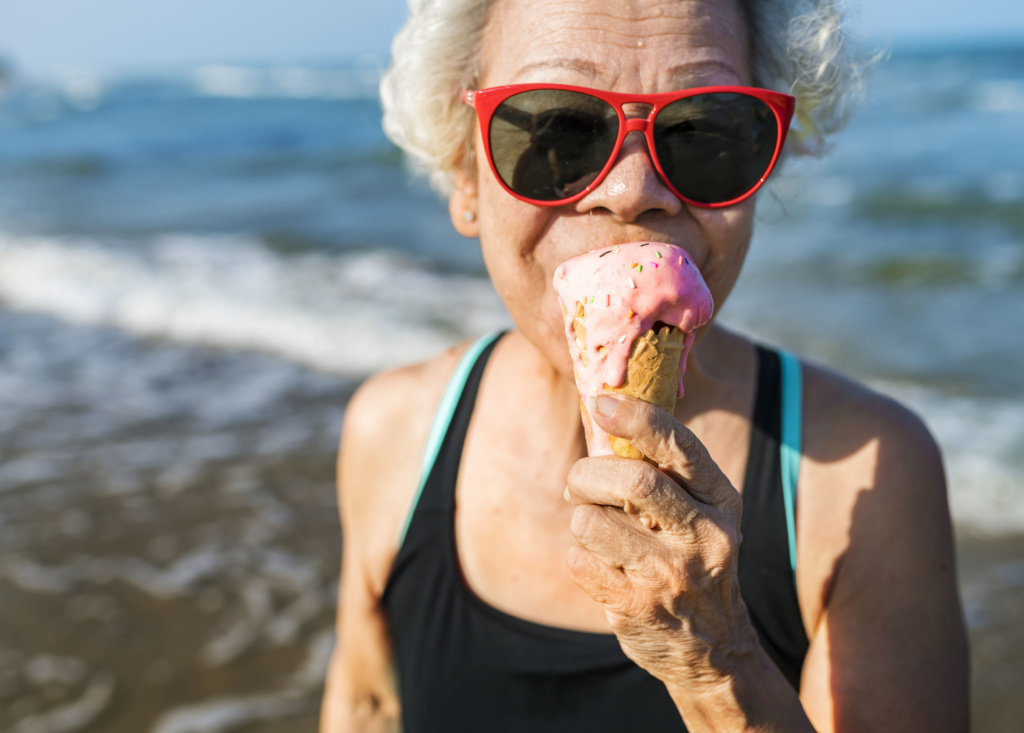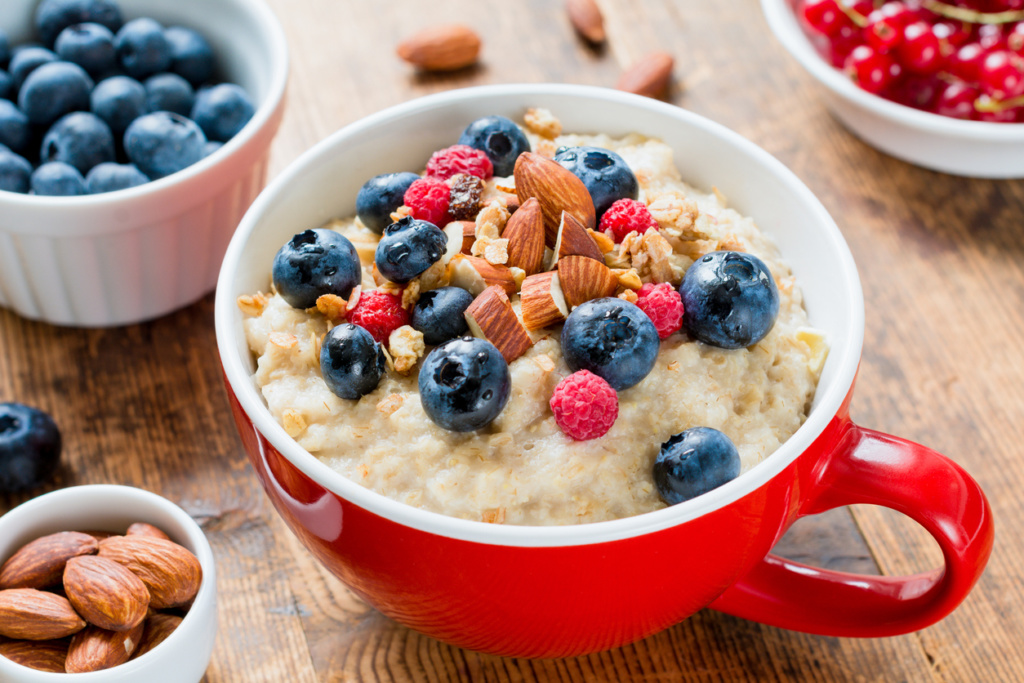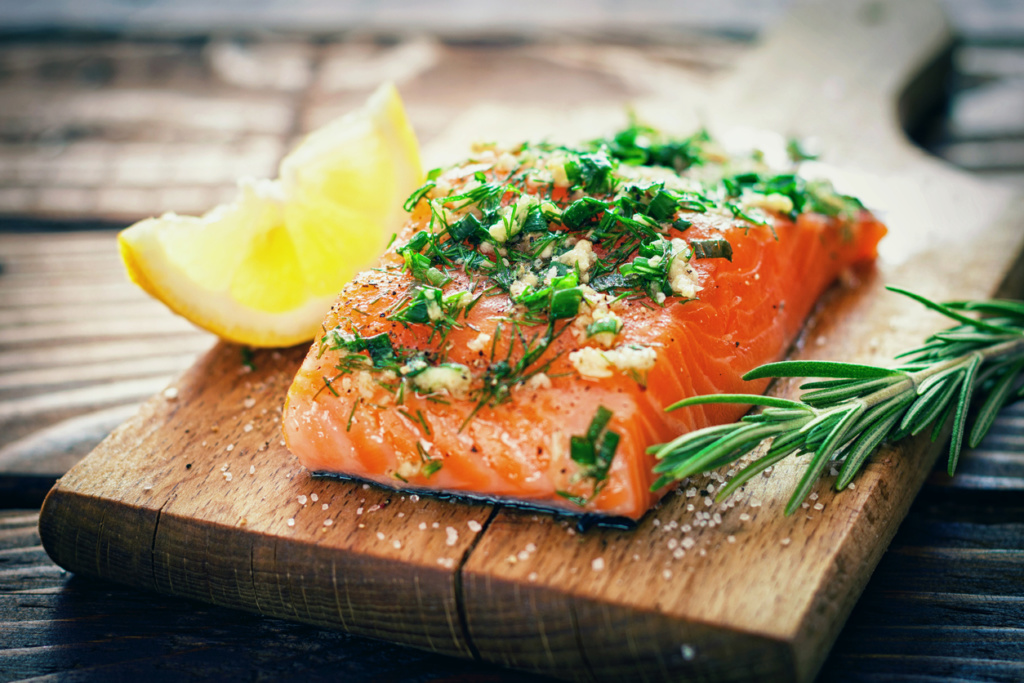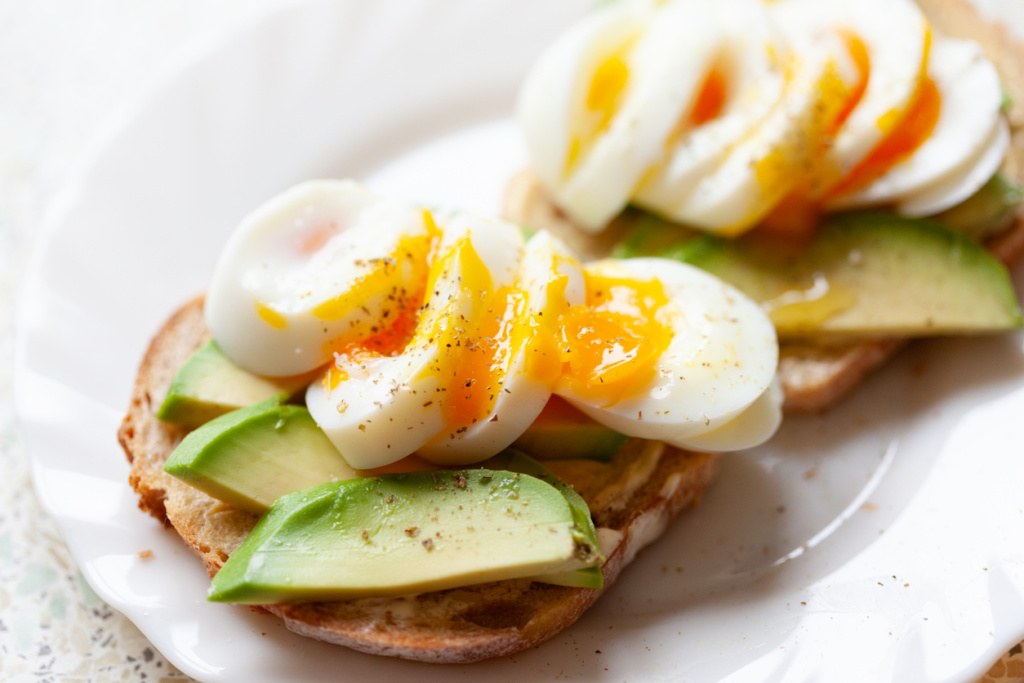Eat more
Growing up doesn’t mean food can’t be fun.
Here’s what seniors need to eat to get the most from life
Article By | Bev Bennett, CTW Features
You probably haven’t read those encouraging words in a long time, maybe not since your teen years. Instead, as a senior, you’re admonished to cut back on fat, calories and cholesterol, and it can be frustrating. Health experts are hearing from patients who don’t know what they can eat anymore.
“One patient said if he followed everyone’s recommendations, he’d just be eating turkey and fish,” says Dr. Carole Gardner, a geriatrician and chief of the Elder Care Department at Kaiser Permanente Georgia, an Atlanta-area healthcare provider.
However, that’s not the whole story. There’s also a positive message.
Yes, consume more: more delicious fruits and vegetables, nutty-tasting whole grains, low-fat dairy products and mouthwatering salmon and tuna. By adding more of these healthful and flavorful foods to your diet, you’ll also increase your intake of fluids, calcium, omega-3 fatty acids, vitamins D and B12, which are essential to your well-being as you age.
Here’s what to add to your table:
Calcium
If you’re 70 or older, you should increase your intake of this bone-protective mineral to 1,200 milligrams (up from 1,000 milligrams) every day. Milk is an excellent source, providing 275 to 300 milligrams per cup. Drink and/or use a total of four cups of milk a day in your cooking and you’re set. But if you were never fond of milk, you may have a hard time reaching your goal through dairy alone.
You’ll also find calcium in fortified orange juice.
“Take a look at orange juice with [added] calcium and vitamin D. You’ll get more for your money,” says Ruth Frechman, a registered dietitian and spokeswoman for the American Dietetic Association.
You also may want to talk to your healthcare provider about taking a calcium supplement.
Dietary fiber
Although you need slightly less fiber as a senior, certain medications, dehydration or dental problems can leave you short. Fortunately, fiber-rich foods, which prevent constipation, are readily available and inexpensive. Eat oatmeal for breakfast or choose cold cereals made from whole-grains, says registered dietitian Dee Sandquist.
Add beans, whole grains, fruits and vegetables to your menus to reach the recommended daily intake of 30 grams for men age 51 and older and 21 grams for women in the same age group.
Omega-3 fatty acids
This healthy fat is very important as you age, says Frechman, who’s based in Burbank, Calif. Eating foods high in omega-3 fatty acids may reduce your risk of arthritis and macular degeneration.
Salmon is one of the best sources of omega-3 fatty acids. The fish also delivers vitamin B12 and protein, giving you more nutrients for your dollar, according to Sandquist, spokeswoman for the American Dietetic Association. Sardines, tuna, walnuts and flaxseed also provide omega-3 fatty acids, Sandquist says. Canned bone-in sardines also are rich in calcium, as well.
Eating fish, especially fatty varieties, at least twice a week, is the American Heart Association’s recommendation. Ask your physician whether you should take omega-3 supplements.
Vitamin D
Spend any time in the sun, and your body synthesizes vitamin D. Unfortunately, that ability declines as you age, leaving you short of this essential vitamin that supports bone health and possibly reduces the risk of certain cancers.
Experts currently recommend getting 600 International Units, which is also 15 micrograms a day, if you’re 71 or older (400 IU if you’re 51 to 70).
Salmon, mackerel, tuna and fortified milk and orange juice are your best food bets. Getting adequate amounts of vitamin D from food alone may be difficult, say nutritionists, who suggest taking a vitamin D supplement.
The vitamin is fat-soluble and should be taken with fat-containing food, such as 1-percent milk or a salmon sandwich.
“Don’t take it first thing in the morning if you haven’t eaten for a while,” Sandquist says.
Vitamin B12
This vitamin, necessary for the formation of red blood cells, is available in animal products, including meat, fish, milk and eggs. Some breakfast cereals are fortified with vitamin B12. Although the vitamin B12 recommendation of 2.4 micrograms a day doesn’t increase when you reach your senior years, your body may be less able to absorb the nutrient from food, which could lead to a deficiency.
Talk to your physician about whether you’re getting adequate vitamin B12, Gardner says.
Water
Water is more than a thirst quencher. It helps regulate body temperature and remove body waste. As you age, you may become less sensitive to thirst and dehydrate quickly, Gardner says.
Don’t wait until you’re parched to have a beverage. Calorie-free water is ideal. Add a little zip to a plain glass of water with a lemon or lime slice, Sandquist says.
Water doesn’t have to be your liquid of choice, but avoid drinks that are high in caffeine, sugar or alcohol. You also can hydrate by eating fluid-containing foods such as yogurt, grapes, apples and cucumbers, Gardner says.
MyPyramid for Older Adults [see sidebar] recommends drinking at least eight servings of water or fluids a day.
More for less
Although older adults need as many or even more of some nutrients than they did in their 30s, they have to get those nutrients from fewer calories, say nutrition experts.
As a general guideline, trim back 10 percent of calories for every decade over age 50, Sandquist says.
A 49-year-old woman can consume 2,000 calories a day, as long as she’s moderately active. That drops to 1,800 calories on her 51st birthday, according to recommendations from the government’s 2005 Dietary Guidelines for Americans.
Getting what your body needs while consuming fewer calories than you did decades ago can be challenging.
Keep a food journal. Note when you’re eating high-fat, sugary snacks and substitute more nutritious options.
And move more. Active women age 51 and up can indulge in 2,000 to 2,200 calories a day without gaining weight.




